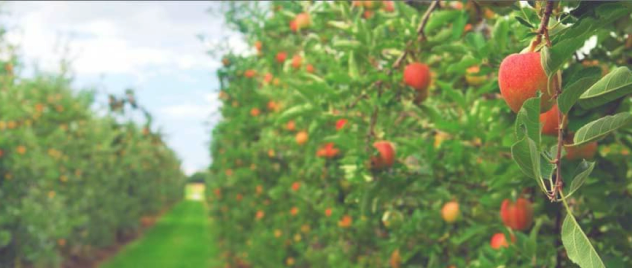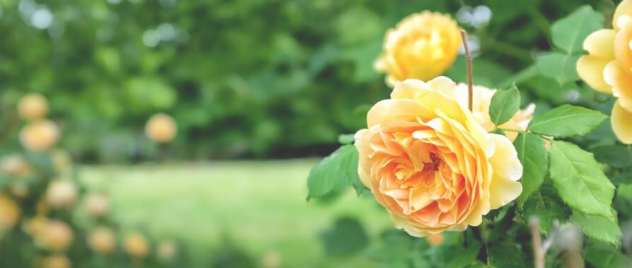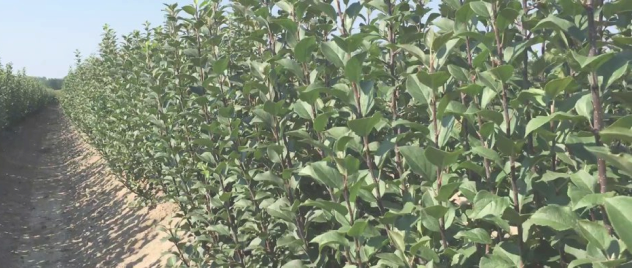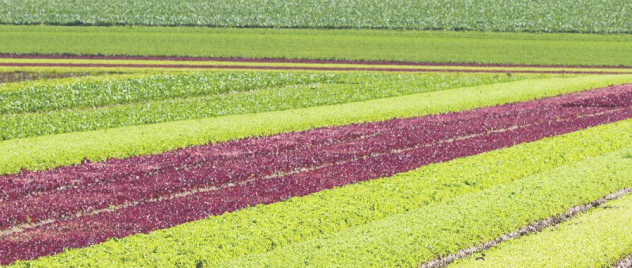CRANBERRIES
Cranberry (Vaccinium macrocarpon) is a small, evergreen shrub that belongs to the Ericaceae family. Native to North America, Europe, and Northern hemisphere cranberries are known for their tart and vibrant red berries. They are highly valued for their unique flavor and are commonly used in various culinary preparations, including juices, sauces, baked goods, and as a topping for salads and desserts. Fruit contains many organic acids, beta-carotene, vitamin C, E and K, vitamin B complex, tannin, iron, and other minerals and has many proven beneficial effects on the human body. Cranberry seeds contain Omega-3 fatty acids, and its antioxidants strengthen the immune system. Thanks to the content of hippuric acid, cranberry is considered as a natural antibiotic. The cranberry shrub features small, glossy leaves and delicate pink flowers. The berries, known for their distinctive tartness, grow in bogs or marshy areas, making cranberry cultivation a unique and specialized endeavor.
CRANBERRY
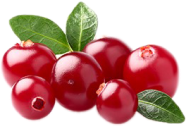
CULTIVATION
Cranberries thrive in cool, temperate climates and require specific growing conditions to flourish. They are typically cultivated in areas with acidic, well-drained soils that are rich in organic matter. Proper water management is crucial for successful cranberry cultivation, as the plants require adequate moisture during the growing season and a drier period during harvest. Cranberry plants are perennials, meaning they can live for many years, and they benefit from regular pruning to maintain plant health and encourage fruit production.
GROWING SYSTEMS
Dry Harvest System: In the dry harvest system, cranberries are grown on relatively dry land with the use of raised beds or mounds. The beds are constructed using sandy soil or a mixture of sand and peat moss, which provides excellent drainage and root aeration. This system allows for ease of management, including weed control and mechanized harvesting. However, it requires more precise irrigation and fertilization practices to ensure optimal growth and berry production.
Wet Harvest System: The wet harvest system, also known as the flooded bog method, is the traditional method used for cranberry cultivation. In this system, cranberries are grown in bogs or marshy areas that can be flooded with water during specific periods, such as during harvest. The flooded conditions help facilitate berry detachment from the vines and allow for easier collection. This system requires careful water management, including maintaining the appropriate water levels, preventing frost damage, and controlling pests and diseases associated with wet environments.
TYPICAL SPACINGS
The spacing between cranberry plants depends on various factors, including the specific variety, growing system, and management practices. Here are some typical spacings for cranberry cultivation:
Dry Harvest System: For cranberries grown in raised beds or mounds, the spacing between plants is typically between 30 to 45 centimeters (12 to 18 inches) within the row. The distance between rows can range from 90 to 120 centimeters (36 to 48 inches). These spacings allow sufficient room for the plants to spread and develop a healthy canopy while facilitating management practices and harvesting.
Wet Harvest System: In the wet harvest system, cranberries are often planted in large beds or bogs. The spacing between plants can vary depending on the specific management practices and variety. Typically, cranberries are spaced approximately 30 to 45 centimeters (12 to 18 inches) apart within the row, with row spacing ranging from 120 to 180 centimeters (48 to 72 inches). These spacings allow the plants to form a dense mat and provide adequate space for water circulation during flooding.
See our full SELECTION of CRANBERRY PLANTS we have in our offer
PILGRIM
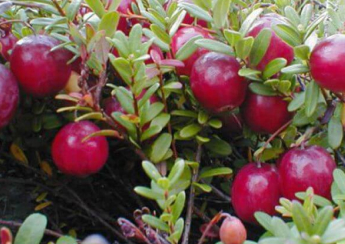
PLANT:
Pilgrim cranberry is a notable variety known for its compact growth habit and excellent fruit production. The plants are medium-sized with a spreading and dense habit, forming low-lying mats or mounds. Pilgrim cranberry plants feature attractive dark green foliage that turns shades of red and bronze in the fall, adding to their visual appeal. They are well-adapted to a variety of growing conditions and exhibit good tolerance to colder climates.
POLLINATORS:
Pilgrim cranberry is a self-pollinating variety. However, planting another compatible cranberry variety nearby can enhance cross-pollination and potentially increase yields.
FRUIT APPEARANCE:
The Pilgrim cranberries are medium-sized with a deep red color when fully ripe. The berries grow in tight clusters and have a smooth skin, giving them a glossy appearance. They have a pleasantly tart flavor balanced with subtle sweetness, making them ideal for both fresh consumption and culinary uses.
HARVEST:
Pilgrim cranberries are typically ready for harvest in late summer to early fall, usually from the first half of September. The berries ripen uniformly, allowing for efficient harvesting. Suitable for machine harvest. The plants offer a generous yield, ensuring an ample supply of these flavorful cranberries.
COMMERCIAL USE:
Pilgrim cranberries are highly regarded for their exceptional flavor and versatility. They are perfect for enjoying fresh, used in sauces, or incorporated into a variety of culinary creations. Pilgrim cranberries are particularly well-suited for juicing and making cranberry products such as jams, jellies, and beverages. With their compact growth habit, attractive foliage, and delicious flavor, Pilgrim cranberries are a popular choice for both home gardeners and commercial growers seeking a reliable and flavorful cranberry variety.
RED STAR
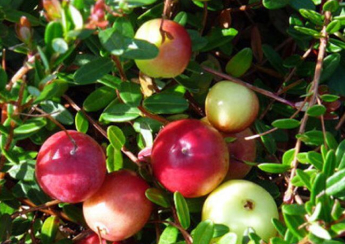
PLANT:
Red Star cranberry is an exceptional variety known for its vigorous growth and high fruit production. The plants are medium-sized with a spreading and dense habit, forming low-lying mats or mounds. Red Star cranberry plants feature attractive dark green foliage that turns shades of red and bronze in the fall, adding to their visual appeal. They are well-adapted to a variety of growing conditions and exhibit good tolerance to colder climates.
POLLINATORS:
Red Star cranberry is a self-pollinating variety. However, planting another compatible cranberry variety nearby can enhance cross-pollination and potentially increase yields.
FRUIT APPEARANCE:
The Red Star cranberries are medium-sized with a deep red color when fully ripe. The berries grow in tight clusters and have smooth skin, giving them a glossy appearance. They have a pleasantly tart flavor balanced with subtle sweetness, making them ideal for both fresh consumption and culinary uses.
HARVEST:
Red Star cranberries are typically ready for harvest in late summer to early fall, usually from the first half of September. The berries ripen uniformly, allowing for efficient harvesting. Suitable for machine harvest. The plants offer a generous yield.
COMMERCIAL USE:
Red Star cranberries are highly regarded for their exceptional flavor and versatility. They are perfect for enjoying fresh, used in sauces, or incorporated into a variety of culinary creations. Red Star cranberries are particularly well-suited for juicing and making cranberry products such as jams, jellies, and beverages. With their vigorous growth, attractive foliage, and delicious flavor, Red Star cranberries are a popular choice for both home gardeners and commercial growers seeking a reliable and flavorful cranberry variety.
STEVENS
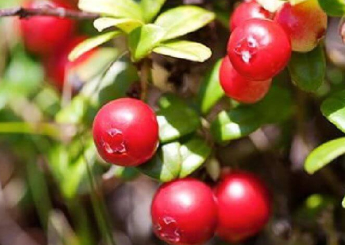
PLANT:
Stevens cranberry is a remarkable variety known for its vigorous growth and high productivity. This variety is widely used for commercial, industrial plantations. The plants are medium-sized with a spreading and dense habit, forming low-lying mats or mounds. Stevens cranberry plants feature attractive dark green foliage that turns vibrant shades of red and bronze in the fall, adding to their ornamental value. They are well-adapted to a variety of growing conditions and exhibit excellent tolerance to colder climates.
POLLINATORS:
Stevens cranberry is a self-pollinating variety. However, planting another compatible cranberry variety nearby can enhance cross-pollination and potentially increase yields.
FRUIT APPEARANCE:
The Stevens cranberries are medium to large in size with a rich and deep red color when fully ripe. The berries grow in tight clusters and have smooth skin, giving them a glossy appearance. They have a pleasantly tart flavor balanced with natural sweetness, making them ideal for both fresh consumption and culinary uses.
HARVEST:
Stevens cranberries are typically ready for harvest in late summer to early fall, usually from the first half of September. The berries ripen uniformly, allowing for efficient harvesting. Suitable for machine harvest. The plants offer a generous yield, ensuring an abundant supply of these flavorful cranberries.
COMMERCIAL USE:
Stevens cranberries are highly valued for their exceptional flavor and versatility. They are perfect for all types of consumption: fresh, used in sauces, or incorporated into a variety of culinary creations. Stevens cranberries are particularly well-suited for juicing and making cranberry products such as jams, jellies, and beverages. With their vigorous growth, attractive foliage, and delicious flavor, Stevens cranberries are a popular choice for both home gardeners and commercial growers seeking a reliable and flavorful cranberry variety.
BIG PEARL
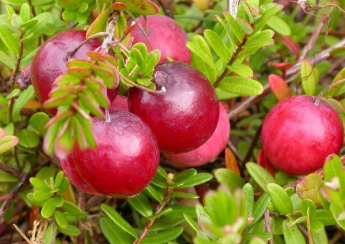
PLANT:
Big Pearl cranberry is an exceptional variety known for its vigorous growth and abundant fruit production. The plants are medium-sized with a spreading and dense habit, forming low-lying mats or mounds. Big Pearl cranberry plants feature attractive dark green foliage that transitions to vibrant shades of red and bronze in the fall, adding to their ornamental value. They are well-adapted to a variety of growing conditions and exhibit good tolerance to colder climates.
POLLINATORS:
Big Pearl cranberry is a self-pollinating variety. However, planting another compatible cranberry variety nearby can enhance cross-pollination and potentially increase yields.
FRUIT APPEARANCE:
The Big Pearl cranberries are large and have a beautiful bright red color when fully ripe. The berries grow in tight clusters and have a smooth skin, giving them a glossy appearance. They have a mildly tart flavor balanced with natural sweetness, making them ideal for both fresh consumption and culinary uses.
HARVEST:
Big Pearl cranberries are typically ready for harvest in late summer to early fall, usually from the first half of September. The berries ripen uniformly, allowing for efficient harvesting. Suitable for machine harvest. The plants offer a generous yield, ensuring an abundant supply of these flavorful cranberries.
COMMERCIAL USE:
Big Pearl cranberries are highly valued for their exceptional flavor and versatility. They are perfect for enjoying fresh, used in sauces, or incorporated into a variety of culinary creations. Big Pearl cranberries are particularly well-suited for juicing, preserving, and drying. With their vigorous growth, attractive foliage, and delicious flavor, Big Pearl cranberries are a popular choice for both home gardeners and commercial growers seeking a reliable and flavorful cranberry variety.

